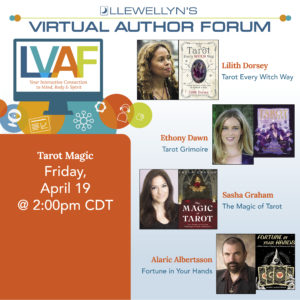
Tarot Correspondences by T. Susan Chang
This is a book we’ve been looking for for quite a while now. It is far more than a collection of tables of correspondences. It is also a guide to getting the most out of using them. Chang explains in the introduction:
Correspondences are friend to the imagination, not its enemy
I believe correspondences don’t just reveal why we see the images we do in each card—they are also a fertile place to plant the seed of our own interpretations. ey are a language which blossoms in the presence of a rich and exible imagination.
As tarot readers, we are the caretakers of a living language of pictures, one we use every day to help ourselves and others in our passage through life. It’s a language that evolves every day we use it, and its vocabulary is as deep and rich as we’re willing to make it. e better we speak tarot, the better readers we become … and the less o en we come up dry in a reading.
As readers, we’re always looking for more in each card, digging for treasure to share with those we read for, hunting for wisdom for ourselves. is is true whether you’ve been reading for two months or forty years: by expanding the language, the imagery, the metaphors we associate with each card, we join them up with our own lived experience.
Divination and Magic: the role of the correspondences in each
Divination and magic are kissing cousins. It’s as if we go to the same place to do different work. If it’s a library, the diviner is the kind of reader who goes there to browse and read and hunt for information—knowledge for its own sake. The magician is the patron who takes out books to use as a tool—knowledge as a weapon and utensil for creating change. If it’s a garden, the diviner tells you when and where to plant and what pests you must deter; the magician plants the seed and harvests the crop when it has grown to maturity.
If I had to choose a single metaphor to describe the place where both divination and magic occur, I’d call it the backstage of reality—its blueprint, map, or foundation. When you do a reading you look at the map, figure out where you’re going, decide on the best route between point A and point B, determine whether point B is really where you want to go in the first place, and consider what obstacles you’re likely to face getting there. When you do magic, you redraw the map so that point A is now a short hop from point B, rather than a three-day slog.
Each method can bene t from the other. What good does it do the magician to take a shortcut if the destination turns out to be a terrible place to be? What good does it do the diviner to have the perfect plan if action does not follow? Neither fate nor free will completely rules our lives.
So, if you think of yourself mainly as a reader, never forget that magic—essentially the power to change your path—is always available to you. And if you are a magician, never forget that divination—essentially, the power of navigation—is a vital part of every shortcut.
The correspondences are the keys to getting backstage, like the passcode that unlocks the GPS. Suppose you draw the Empress, complete with a retinue of correspondences that includes the goddess Venus, the color green, the day Friday, bees, doves, roses, and swans. As a reader, you’ll your mind with these associations. And whatever the question—Will my business grow? Can I become pregnant? What do I need more of in my life?—you can be sure that somewhere in that garden of details is the answer.
As a magician, you don’t stop at answers. You instead invite the Empress to take charge of your affairs (or one part of them). You call her on her day, at her hour, in her dignity and with her to- kens, and you ask her for her help, please, in bringing love or peace or wealth into your life. Then you thank her, leave the room, close the door behind you … and you don’t look back.










A great reference book to use when combining tarot spreads and magick